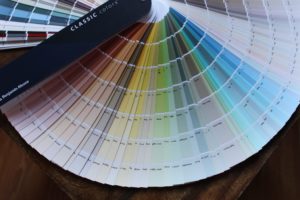Formal Design Ideas for Less is a blog that offers design ideas to make the classroom more inviting, memorable, and professional.
One of the most important factors in making your classroom more memorable is making it feel smaller. The smaller the room, the more personal it feels. Additionally, it will help facilitate communication between students and instructors. One way to do this is by creating a small space for students to relax in after class or before class. This can be done by incorporating plants into your classroom design.
Customize your instruction by using digital screens which are connected to lighting or sound systems so students are notified when they should pay attention or when they have permission to take a break from instruction. WriteEssayForMe team collected ideas for you to create best design for the classroom.
Why is Classroom Design so Important?

The most important part of a design is often referred to as ‘space’ or ‘place’. It’s where people do their work and also where they gather.
Furniture – A Few Things You Should Consider when Choosing the Right Desk for Your Classroom
A good work desk can provide students with a wide variety of benefits such as increased productivity, reduced stress and improved concentration. The desk can also help improve the way students think and work in school, making them more productive and ultimately saving time.
A student workspace that is not properly designed can cause distractions and lower productivity. It is important that the workspace has enough space for the student and has an ergonomic design to prevent injuries.
Lighting – What They Say & What They Mean in Terms of Ambiance & Effectiveness in the Classroom
This is a very broad topic and many people have different opinions on light fixtures. This is why it’s important for educators to understand the different types of lighting they can use in their classrooms.
The most common type of lighting used in classrooms is fluorescent lights. They are cheap and there is a lot of variety with them, which makes them easy to maintain. Fluorescent lighting emits a blueish light that is not that bright but they can be effective when used properly according to certain teaching methods that require a blue-ish tone for example, such as Discovery Learning and Orton-Gillingham.
Lighting fixtures can be installed on the ceiling or on the wall. The best option depends on the space you have available and the type of atmosphere you want your classroom to have.
Wallpaper – Making a Statement with Color When Using Wallpaper in Your Student Workplace

The amount of color in a room can make or break the mood of a space. It’s important to be intentional when you are choosing colors for your living space. If you are looking for an easy way to create a new look, consider adding some wallpaper designs!
A/V Equipment – What’s Needed for Recording Classes and Installing Basic A/V Equipment at School
Here’s a list of the basics that you will need to get started:
- External hard drive: The external hard drive is the central repository for all your digital media and it is where we store our videos, photos, and music.
- USB microphone: The USB microphone plugs into any standard input on your computer. Recording audio with a microphone is much better than using your computer’s built-in speakers or headphones.
- Camera: The camera will be used to capture videos and still images of whatever it captures will be saved in the external hard drive.
Lights Out! – When Should You Turn Lights Out?
The simplest way to find out when to turn lights out at night is by setting up a timer. However, this option does not account for your schedule or the day/night cycle due to the time zone that you are in. Another option is using a smart light bulb that can do that for you. Smart light bulbs contain sensors and algorithms that can sense when sunlight reaches them and turn off automatically when it’s pitch dark.
The downside of using these smart bulb is the extra cost and the energy consumption – they use more electricity than regular bulbs and some can be pricey too!
When deciding whether or not to purchase a smart light bulb, it’s important to think about what your priorities are: saving costs vs. saving energy costs.



 The Pros and Cons of Using Food Tracking Apps
The Pros and Cons of Using Food Tracking Apps